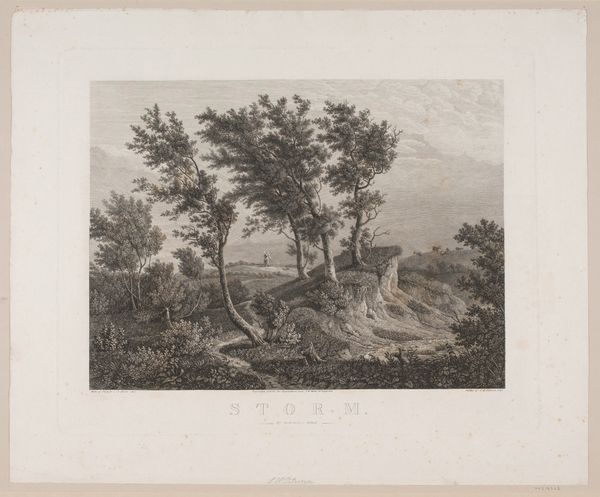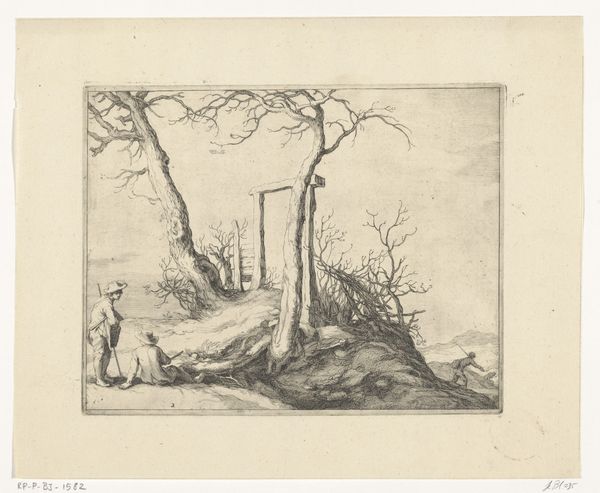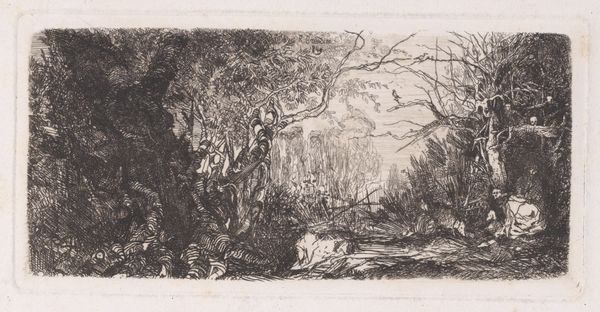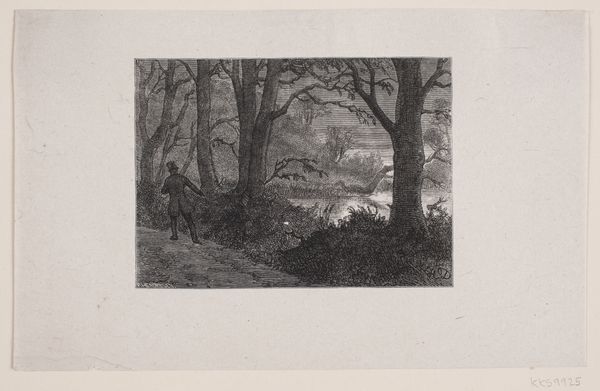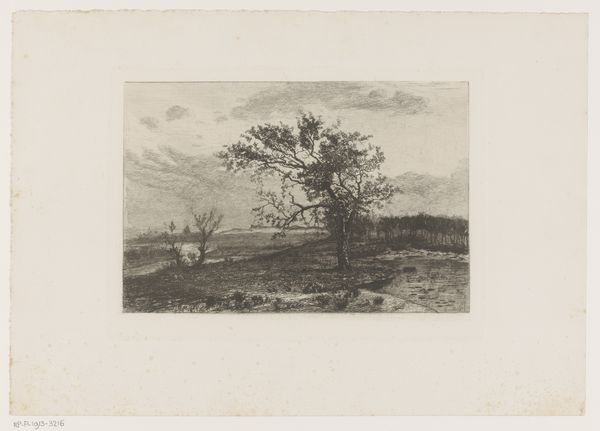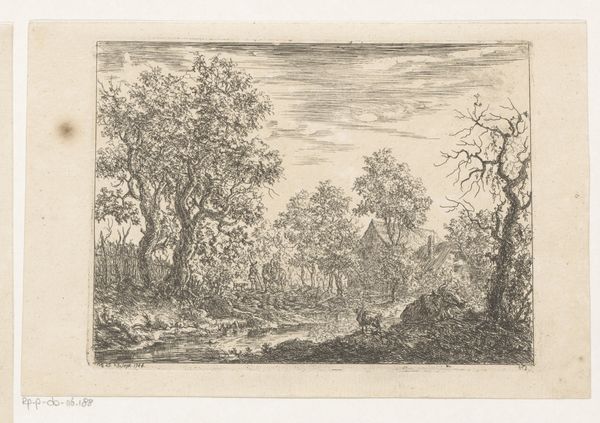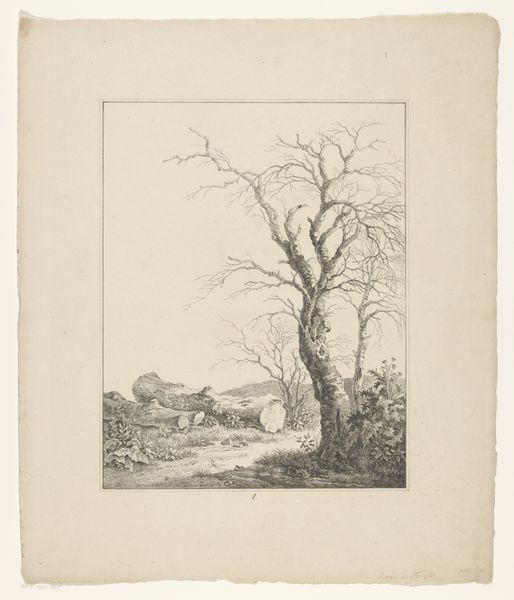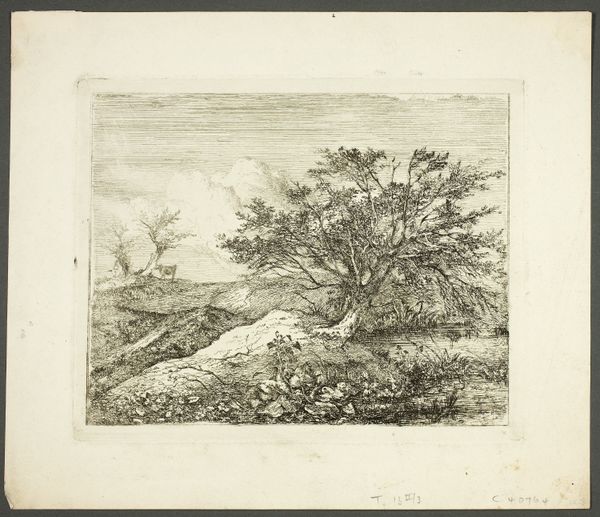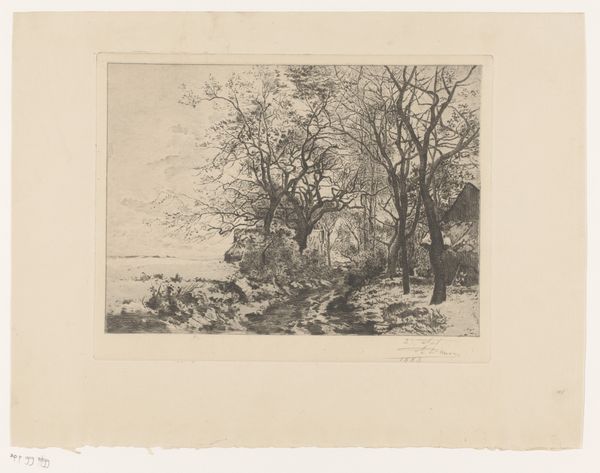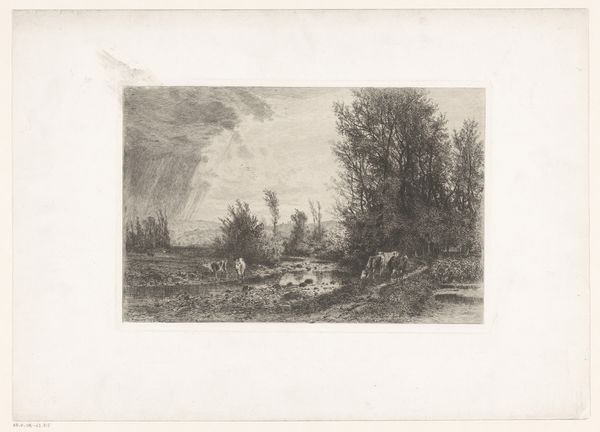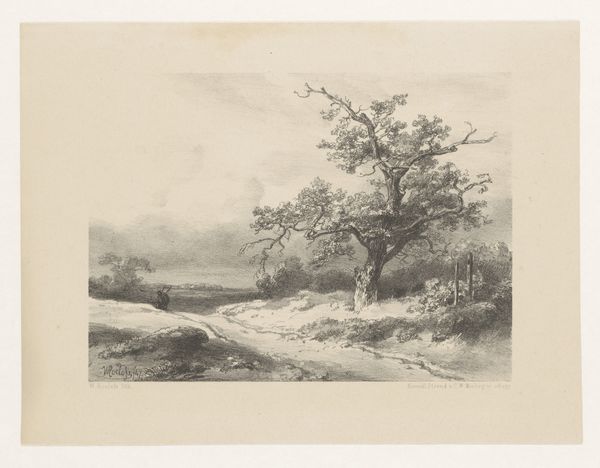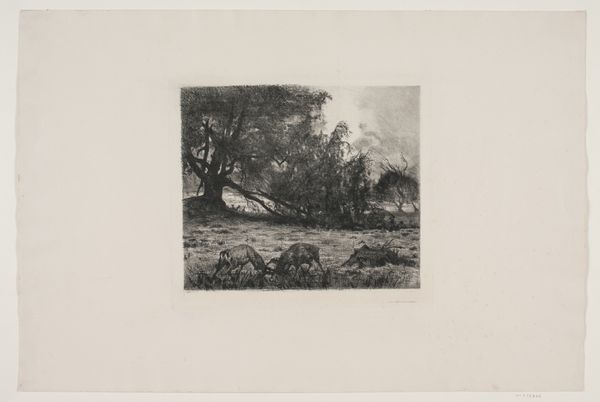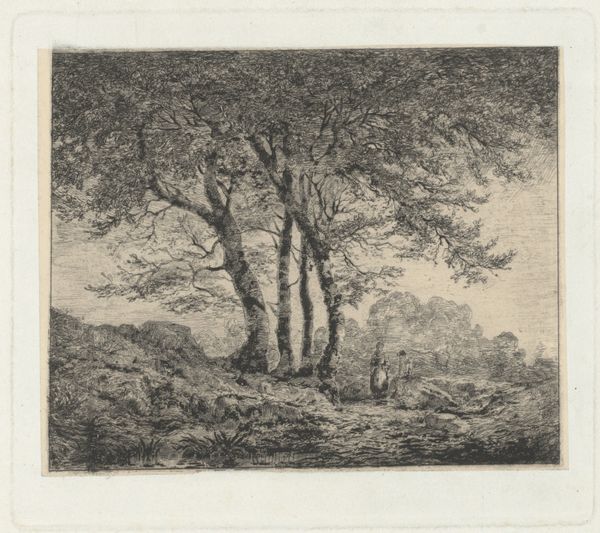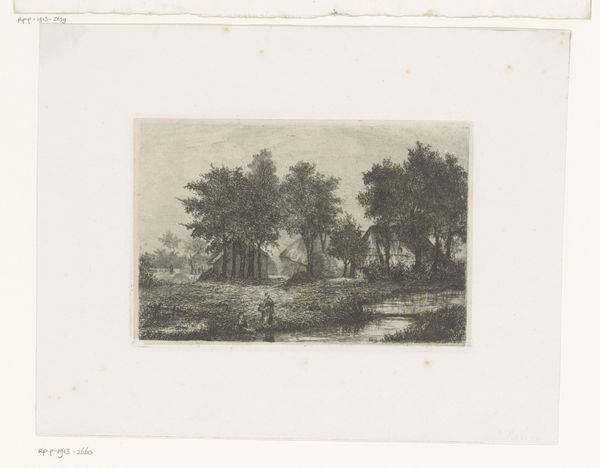
drawing, print, etching
#
drawing
# print
#
etching
#
landscape
#
etching
#
romanticism
Dimensions: height 176 mm, width 271 mm
Copyright: Rijks Museum: Open Domain
Curator: Brrr, this image evokes a chill. The monochromatic palette creates a stark, almost desolate feeling. Editor: We're looking at Paulus Lauters' etching, "Winter in het bos," created around 1836. It's currently housed here at the Rijksmuseum. I think you’re picking up on the Romantic movement’s fondness for emotional landscapes. Curator: Etching, interesting. You can really see the hand of the artist in the dense cross-hatching and delicate lines. It feels like a very labour-intensive process to convey this specific atmospheric perspective. I wonder about the kind of tools and techniques that would’ve been used in creating this? Editor: Consider the rise of printmaking in the 19th century—a way to disseminate imagery widely and tap into a burgeoning market. This etching would have been relatively affordable, bringing images of nature, imbued with romanticism, to a broader public than painted landscapes ever could. The commercial aspect greatly impacts both content and availability of such imagery. Curator: That mass-produced availability shifts the entire conversation around art! You go from a one-off singular painting made for a wealthy patron to something accessible for middle-class homes. The change of context and therefore relationship between the artist and audience must have changed radically with the democratization of this kind of imagery. Editor: Exactly! The narrative of nature as a place of emotional reflection shifts too. This romanticism and idealisation is being sold en-masse. How does this change the perception of both art and landscape? Curator: The very notion of originality and uniqueness is destabilized! This opens doors to new modes of making and new relationships to craft. Instead of aspiring towards unique object production, maybe art becomes about process itself, with multiples or variation of iterations—art becoming about repeatable, manufacturable processes instead of just "The Artwork." Editor: I see your point. I find myself drawn back to that lone figure walking through the woods – is this Lauters himself, perhaps? It fits into a well-established artistic tradition of placing the individual within sublime, dramatic natural settings. A figure overwhelmed yet comforted in a bigger landscape! Curator: It’s remarkable how an artistic and commercial work made of humble material like ink on paper can provoke a reflection on nature, labor, and the changing role of art within society! Editor: Indeed, "Winter in het bos" allows us to see how art reflects and shapes our understanding of both the external world and the socio-political structures within which we exist.
Comments
No comments
Be the first to comment and join the conversation on the ultimate creative platform.
